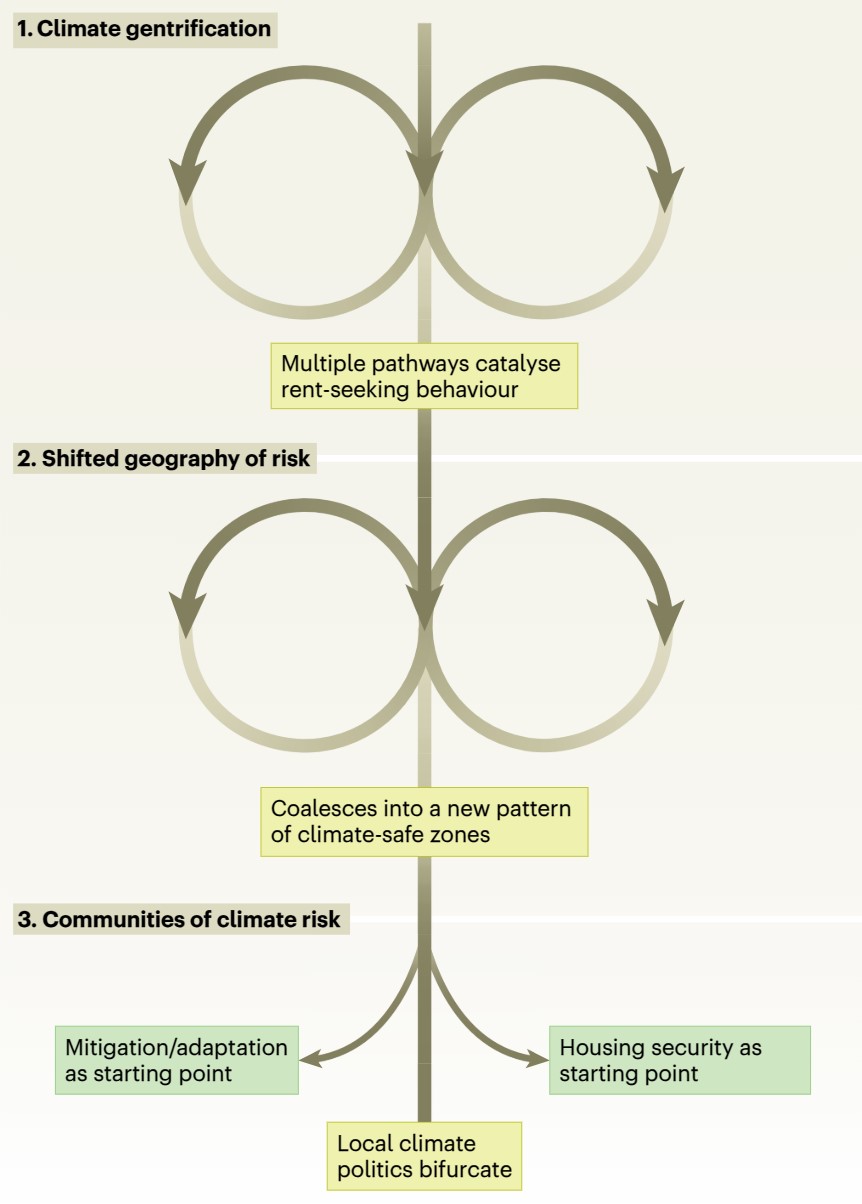
March 12, 2025
Connolly's publication in the journal Nature Climate Change, "The implications of climate gentrification for urban climate action", describe how "climate gentrification" could threaten the continued efficacy of climate action in the long term.
"The implications of climate gentrification for urban climate action"
Nature Climate Change
James J. T. Connolly
An introduction to this paper's insights
"Urban climate actions have resulted in some progress towards reducing greenhouse gas emissions and adapting human settlements to a warmer planet. However, the long-term implications of climate gentrification threaten the continued efficacy of these actions."
 Connolly says evidence shows the long-term implications of climate gentrification are unfolding in a 3-stage process:
Connolly says evidence shows the long-term implications of climate gentrification are unfolding in a 3-stage process:
- Different groups of people simultaneously experience different types of climate gentrification
- A new geography of risk exposure forms in uban regions
- Distinct climate risk communities take shape
As a consequence, competing agendas are developing around those who prioritize established climate mitigation/adaption measures and those who prioritize housing security relative to climate risk. Yet, divided urban climate politics are not fated to happen: there is a way forward through planning that addresses challenges at the nexus of housing and climate issues.
Urban climate planning is at a bit of a crossroads. If it continues on its established path, it is likely to face steep challenges. But, to the extent that we can understand the intersection between climate and housing vulnerability, these challenges can be overcome.
